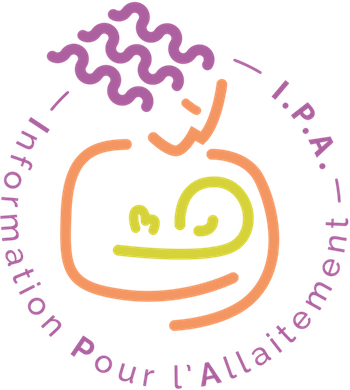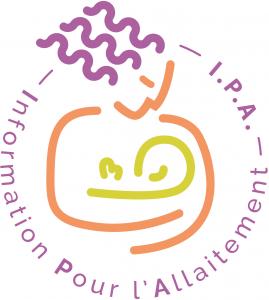Catégories
Documents disponibles dans cette catégorie (137)
Bulletin : texte imprimé
Les Dossiers de l'Allaitement, n°147 - Juin 2019
La Leche league France, Auteur | 2019Article : texte imprimé
Amy Brown, Auteur ; Sue Jordan, Auteur |Background: Evidence is growing that active management of the third stage of labor using prophylactic uterotonics may be associated with lower breastfeeding rates. The reasons underlying this relationship are incompletely understood. The aim of [...]Article : texte imprimé
Ryoko Pentecost, Auteur ; Jane S. Grassley, Auteur |Background: Increasing the number of infants who are breastfed has become a worldwide health priority because of the extensively documented health and economic benefits of breastfeeding for mothers and their children. It is unfortunate that ado[...]Article : texte imprimé
Article : texte imprimé
Breastfeeding initiation rates in developed countries are steadily increasing, in part due to successful breastfeeding promotion campaigns and practices supportive of early breastfeeding, yet breastfeeding duration rates remain low. This disconn[...]Article : texte imprimé
Alison M. Stuebe, Auteur ; Briana J. Jegier, Auteur ; Eleanor B. Schwarz, Auteur |Objective: We sought to determine the impact of changes in breastfeeding rates on population health. Materials and Methods: We used a Monte Carlo simulation model to estimate the population-level changes in disease burden associated with marg[...]Article : texte imprimé
Casey Rosen-Carole, Auteur ; Eve Waltermaurer, Auteur ; Monet Goudreault, Auteur |Background: Provider attitudes can influence breastfeeding decision making, initiation, and duration, although much of this research has suffered from a “hospital-limited view.” Objectives: This study aimed to evaluate the effect of a Breas[...]Article : texte imprimé
Zelalem T. Haile, Auteur ; Reena Oza-Franck, Auteur ; Ilana R. Azulay Chertok, Auteur |Background: Exclusive breastfeeding is recommended in the first 6 months of life, especially for infants born to women with a history of gestational diabetes mellitus (GDM). Yet, women with a history of GDM face challenges with exclusive breast[...]Article : texte imprimé
Hege Grundt, Auteur ; Bente Silnes Tandberg, Auteur ; Renée Flacking, Auteur |Background Hospitalization in neonatal intensive care units with a single-family room design enables continuous maternal presence, but less is known regarding the association with milk production and breastfeeding. Research aim To compare m[...]Article : texte imprimé
Chuan-Ming Li, Auteur ; Li Ruowei, Auteur ; Cindy G. Ashley, Auteur |Background: In 2009, the Centers for Disease Control and Prevention implemented the Maternity Practices in Infant Nutrition and Care (mPINC) survey in all US birth facilities to assess breastfeeding-related maternity practices. Maternity practi[...]Article : texte imprimé
Geneviève Ritchie Ewing, Auteur ; Amanda M. Mitchell, Auteur ; Lisa M. Christian, Auteur |Background: Breastfeeding plays an important role in both maternal and infant health and well-being. While researchers have examined the relationship between postpartum psychological distress and breastfeeding behaviors, few have investigated l[...]Article : texte imprimé
Rachel Eni, Auteur ; Wanda Phillips-Beck, Auteur ; Punam Mehta, Auteur |Background: In Canada, First Nations women are far less likely to breastfeed than other women. First Nations people have been subjected to massive health and social disparities and are at the lowest end of the scale on every measure of well-bein[...]Article : texte imprimé
AK Anderson, Auteur ; Evan Johnson, Auteur ; Nicole Motoyasu, Auteur |Background: Over the past 2 decades, southern states in the United States have recorded the lowest breastfeeding rates. It is not known whether awareness of breastfeeding laws and provision of resources play any role in their breastfeeding prac[...]Article : texte imprimé
Miguel A. Marín Gabriel, Auteur ; Laura Domingo Goneche, Auteur ; Irene Cuadrado Pérez, Auteur |Background: Adherence to the Ten Steps of the Baby-Friendly Hospital Initiative has been shown to have a protective role for the initiation and maintenance of breastfeeding. Research Aims: (1) To determine the breastfeeding rate during the [...]Article : texte imprimé
Anita Gupta Hurwitz, Auteur ; Phillip R. Farrow, Auteur ; Genevieve Preer, Auteur |Background: The deleterious effect of formula company–sponsored discharge bags on breastfeeding is well established. As of July 2012, all 49 maternity facilities in Massachusetts had banned these bags, making it the second “bag-free” state in th[...]Article : texte imprimé
Amy M. Johnson, Auteur ; Alissa Correll, Auteur ; John F. Greene, Auteur |Despite the known health benefits for mother and infant, compliance with exclusive breastfeeding continues to challenge many healthcare providers. In an ongoing attempt to maintain the goals of the Healthy People 2010 initiative, our institution[...]Article : texte imprimé
Julie L. Ware, Auteur ; Larita Webb, Auteur ; Marian Levy, Auteur |Breastfeeding is recommended exclusively for the first 6 months of life, with continuation after the addition of complementary foods for at least 1 year of life. Breastfeeding rates are low in the Southeastern United States, especially among Afr[...]Article : texte imprimé
Iva Burinova, Auteur ; Katarina Kulihova, Auteur ; Veronika Vitkova, Auteur |Background: Goals of treatment of orofacial cleft are to improve feeding, speech, hearing, and facial appearance. Early surgery brings faster healing, better cosmetic effect, and fewer complications. Breastfeeding rates after early surgery are [...]Article : texte imprimé
Heather L. Sipsma, Auteur ; Krista L. Jones, Auteur ; Heather Cole-Lewis, Auteur |Despite growing evidence of the benefits of breastfeeding, rates of breastfeeding remain disproportionately low among adolescent mothers compared with older mothers in the United States. Current interventions primarily target adult women, and li[...]Article : texte imprimé
Osman Sabuncuoglu, Auteur ; Cahid Orengul, Auteur ; Alperen Bikmazer, Auteur |Introduction: Although children with attention-deficit/hyperactivity disorder (ADHD) were reported to have insufficient breastfeeding, consequences and oropharyngeal implications of this finding have not been studied. In this case-control study,[...]Article : texte imprimé
Breastfeeding, Antidepressants, and Depression in the Mercy Pregnancy and Emotional Well-Being Study
Megan Galbally, Auteur ; Stuart J. Watson, Auteur ; Helen L. Ball, Auteur |"Background: Depression is consistently shown to predict lower rates of breastfeeding. In a handful of studies, breastfeeding has predicted lower depression symptoms. However, studies demonstrating the latter are limited in their measurement of[...]Article : texte imprimé
Kristen Mitchell-Box, Auteur ; Kathryn L. Braun, Auteur ; Eric L. Hurwitz, Auteur |Breastfeeding is considered the best infant feeding method, yet initiation and duration rates in the United States are lower than recommended by medical and public health professionals. Positive attitudes toward breastfeeding of the male partner[...]Article : texte imprimé
Jan Coles, Auteur ; Amy Anderson, Auteur ; Deborah Loxton, Auteur |Background: Childhood sexual abuse (CSA) is prevalent across the world. Childhood sexual abuse is associated with poorer health, but information on its impact on breastfeeding is limited. In this study, the authors investigated the link between[...]Article : texte imprimé
Erin McElderry Bascom, Auteur ; Melissa A. Napolitano, Auteur |Background: Although postpartum depression is associated with lower breastfeeding initiation rates and shorter breastfeeding duration, the potential mechanisms through which this relationship functions are not well understood. Objective: Th[...]Article : texte imprimé
Breastfeeding Exposure, Attitudes, and Intentions of African American and Caucasian College Students
Background: African American mothers lag behind in breastfeeding initiation. Research is needed to gain an understanding of potential reasons for breastfeeding disparities. Research aim: This study explored breastfeeding exposure, attitudes[...]Article : texte imprimé
Harumi Reis-Reilly, Auteur ; Nikia Fuller-Sankofa, Auteur ; Calondra Tibbs, Auteur |To improve equity in breastfeeding rates and eliminate breastfeeding disparities, the Centers for Disease Control and Prevention, Division of Nutrition, Physical Activity, and Obesity in 2014 funded the National Association of County and City He[...]Article : texte imprimé
Sandra A. Banta-Wright, Auteur ; Nancy Press, Auteur ; Kathleen A. Knafl, Auteur |Objective: This study described the prevalence and duration of mothers' breastfeeding infants with phenylketonuria (PKU) and explored factors related to duration of breastfeeding as a surrogate for breastfeeding success. Subjects and Methods:[...]Article : texte imprimé
Sharon M. Karp, Auteur ; Abigail Howe-Heyman, Auteur ; Mary S. Dietrich, Auteur |Objective: This secondary analysis examined breastfeeding initiation rates and factors related to initiation in a sample of multiparous women with a history of a prior preterm birth. Subjects and Methods: Data for a subsample of women (n=130)[...]Article : texte imprimé
Nicole Yonke, Auteur ; Rebekah Maston, Auteur |Background: Women taking methadone or buprenorphine are encouraged to breastfeed if stable without polysubstance use. Research Aim: We aimed to determine the difference between stated intention to breastfeed prenatally in women taking metha[...]Article : texte imprimé
Heather L. Sipsma, Auteur ; Anna A. Divney, Auteur ; Urania Magriples, Auteur |Background: Rates of breastfeeding remain disproportionately low among young mothers in the United States. Although breastfeeding behavior may be most directly related to breastfeeding intention, little is known about breastfeeding intentions am[...]Article : texte imprimé
Zixin Lou, Auteur ; Guo Zeng, Auteur ; John G. Orme, Auteur |Background: Despite the high breastfeeding initiation rate in China (> 90%), the low exclusivity rate is of concern. Some traditional behaviors, combined with increasing popularity of infant formula, may negatively affect future breastfeeding [...]Article : texte imprimé
Shamini Ramoo, Auteur ; Tuyet Anh Trinh, Auteur ; Jane Elizabeth Hirst, Auteur |Background: The benefits of breastfeeding to both maternal and infant health are vast and widely known. The aim of this study was to elicit the rates of exclusive breastfeeding, early initiation of breastfeeding, and colostrum feeding and to det[...]Article : texte imprimé
Laura Lauria, Auteur ; Angela Spinelli, Auteur ; Marta Buoncristiano, Auteur ; Mauro Bucciarelli, Auteur ; Enrica Pizzi, Auteur |Background: In Italy, there is no widespread standardized national monitoring system for breastfeeding practices. Research aims: To estimate breastfeeding indicators according to World Health Organization recommendations and associated soci[...]Article : texte imprimé
Deborah Dumphy, Auteur ; Julie Thompson, Auteur ; Myra Clark, Auteur |Background: Breastfeeding is the gold standard nutrition for infants, and more than three-fourths of US mother–infant couplets initiate breastfeeding at birth. However, breastfeeding rates plummet after hospital discharge, when mother–infant co[...]Article : texte imprimé
Martha B. Kole-White, Auteur ; Laurie Griffin, Auteur ; Jia Jennifer Ding, Auteur |Objective: Breastfeeding is known to have a positive impact on maternal and neonatal health. Some have suggested that gestational diabetes mellitus (GDM) is associated with lower breastfeeding rates, but it is not known whether rates are further[...]Article : texte imprimé
No less important is the recognition that the basis of proper nutrition is exclusive breastfeeding for the first 6 months and continued breastfeeding plus quality complementary food for the next 1–2 years. As such, today it has become axiomatic [...]Article : texte imprimé
Doaa M. Abdel-Hady, Auteur ; Abdel-Hady El-Gilany, Auteur |Background: Calculating exclusive breastfeeding (EBF) rates based on the previous-day recall has been recommended by the World Health Organization to avoid the recall bias but it also may not accurately reflect the feeding pattern since birth an[...]Article : texte imprimé
Chao Chen, Auteur ; Ran-Chou Chen, Auteur ; Miauh-Shin Chen, Auteur |Key messages A national Mother–Baby Friendly Institute program inviting health care workers and maternal institutes to become involved in breastfeeding promotion and support was established in 2001. It was based on the Ten Steps to Successful B[...]Article : texte imprimé
Simonne S. Nouer, Auteur ; Julie L. Ware, Auteur ; Katherine M. Baldwin, Auteur |Background: The Southern United States has low breastfeeding rates, particularly among African Americans. Breastfeeding rates are influenced by community attitudes and norms. Objective: This study aimed to examine changes in breastfeeding a[...]Article : texte imprimé
Gail C. Christopher, Auteur ; Joanne K. Krell, Auteur |We've seen the headlines in the media: “The Mommy Wars,” “A Woman's Right to Choose (Not to Breastfeed),” and “The Case Against Breastfeeding,” among others. These headlines are focused on the individual mother and the notion of choice, pitting [...]Article : texte imprimé
How can we encourage breastfeeding among our most vulnerable mothers and infants? Breastfeeding advocates have struggled with this question for decades. This issue of Breastfeeding Medicine contains three important articles that examine the issu[...]Article : texte imprimé
Ganga L. Srinivas, Auteur ; Mary Benson, Auteur ; Sarah Worley, Auteur |Background: Whereas breastfeeding initiation rates have risen in all groups throughout the country, rates of breastfeeding duration have changed more slowly. Peer counseling has had some success in sustaining breastfeeding, but with intensive p[...]Article : texte imprimé
Jennifer Riley, Auteur ; Sara Cherkerzian, Auteur ; Charis Benjamin, Auteur |Background: Pasteurized donor human milk (PDHM) supplementation for healthy infants is an emerging practice. Little is known about demographics or breastfeeding outcomes for dyads whose mothers choose PDHM versus formula. Research Aims: To id[...]Nouveauté
Article : texte imprimé
Juhee Kim, Auteur ; Rose Ann Mathai, Auteur |Background: The environment or setting to which an infant is exposed is crucial to establishing healthy eating habits and to preventing obesity. This study aimed to compare infant feeding practices and complementary food type between parent care[...]Article : texte imprimé
Sabrina Trigo, Auteur ; Kaitlin Gonzalez, Auteur ; Nicole Valiquette, Auteur |Background: Lactation is a normal postpartum physiological process that can continue in excess of 3 years and is often the sole nutritional source for infants in the first 6 months of life. Breastfeeding not only provides infant nutrition, but a[...]Article : texte imprimé
Genevieve Preer, Auteur ; Jessica M. Pisegna, Auteur ; John T. Cook, Auteur |Background and Objective: Until 2010, newborns at our institution were bathed in the nursery at approximately 2 hours of life. In May 2010, infant baths were delayed until at least 12 hours of life. Infants are now bathed in the hospital room wi[...]Article : texte imprimé
Article : texte imprimé
Christine D. Garner, Auteur ; Stephannie L. Ratcliff, Auteur ; Loralei L. Thornburg, Auteur |Background: Breastfeeding rates in the United States are suboptimal. Health professionals (HPs) have a unique opportunity to support breastfeeding because of the frequency and timing of their visits with mothers and infants as well as their call[...]Article : texte imprimé
Shimrit Keddem, Auteur ; Phyllis Solomon, Auteur |Background: Although breastfeeding is a major public health priority and provides numerous benefits, women veterans encounter many barriers to initiating and sustaining breastfeeding. Women veterans are a growing population with unique health c[...]Article : texte imprimé
Objective: Disparities in U.S. breastfeeding rates persist among Black mothers according to birth country and between Black and White mothers, necessitating further investigation of modifiable mediating factors to inform interventions. This stud[...]Article : texte imprimé
Caixin Yin, Auteur ; Xi Su, Auteur ; Qiuxia Liang, Auteur |Objective: To evaluate the effects of a baby-led self-attachment breastfeeding support intervention on the prevalence and duration of exclusive breastfeeding and nipple pain at 3 days, 6 weeks, 3 months, and 6 months postpartum among Chinese mot[...]Nouveauté
Article : texte imprimé
Jonathan L. Abbott, Auteur ; Jenava R. Carty, Auteur ; Eileen Hemman, Auteur |Objective: To compare the effect of early versus traditional postpartum follow-up intervals on breastfeeding continuation rates 6 months postpartum. Methods: This randomized controlled trial enrolled primiparous women planning to breastfeed t[...]Article : texte imprimé
Laurie B. Griffin, Auteur ; Julia D. López, Auteur ; Megan L. Ranney, Auteur |Background: Low-income women are less likely to breastfeed than high-income women. Technology-based interventions demonstrate promise in decreasing health disparities. We assessed whether increased use of breastfeeding smartphone applications (a[...]Article : texte imprimé
Engaging African American Parents to Develop a Mobile Health Technology for Breastfeeding: KULEA-NET
Loral Patchen, Auteur ; Lindsey Ellis, Auteur |Background African Americans breastfeed less than other groups, which has implications for health throughout the life course. Little is known about mobile health technologies to support breastfeeding. Research aims This study proceeded in t[...]Article : texte imprimé
Lydia Furman, Auteur ; Steve Killpack, Auteur ; Lisa Matthews, Auteur |Purpose: Our objective was to pilot a method of engaging fathers/partners of high-risk inner-city mothers in breastfeeding support. Materials and Methods: Breast for Success was a breastfeeding promotion initiative with a father engagement co[...]Article : texte imprimé
Examining the Baby Café Model and Mothers' Breastfeeding Duration, Meeting of Goals, and Exclusivity
Lucia A. Jenkins, Auteur ; Katie Barnes, Auteur ; Angela Latter, Auteur ; Roger A. Edwards, Auteur |Objective: Accessible community lactation support impacts a woman's breastfeeding success by offering timely intervention and solutions, thereby allowing mothers to achieve breastfeeding goals and improve overall breastfeeding rates. Although th[...]Article : texte imprimé
Kathryn E. McIsaac, Auteur ; Wendy Lou, Auteur ; Daniel Sellen, Auteur |Background: Very little population-based research has been conducted around the exclusive breastfeeding practices of Inuit Canadians. Objectives: This research aims to assess the distribution of exclusive breastfeeding among Inuit Canadians[...]Article : texte imprimé
Roslyn Giglia, Auteur ; Kylee Cox, Auteur ; Yun Zhao, Auteur |Background: Exclusive breastfeeding for 6 months is acknowledged universally as the optimal feeding method for infants in order to provide the greatest health and well-being gains for the infant and mother. Despite this, many women stop short of[...]Article : texte imprimé
Nikmah Salamia Idris, Auteur ; Sudigdo Sastroasmoro, Auteur ; Fatimah Hidayati, Auteur |Objectives: This study investigated factors involved in breastfeeding planning of pregnant Asian women. Subjects and Methods: A cross-sectional study was conducted on 207 pregnant women visiting the Budi Kemuliaan Hospital, Jakarta, Indonesia[...]Article : texte imprimé
Kelly K. Gurka, Auteur ; Paige P. Hornsby, Auteur ; Emily Drake, Auteur |Background: Low-income women have the lowest rates of breastfeeding in the United States. Greater understanding of factors that predict intention to feed artificial breastmilk substitute is needed to inform the design and timing of interventions[...]Article : texte imprimé
Abigail Harrison, Auteur ; Shani Fletcher-Groves, Auteur ; Georgiana Gordon-Strachan, Auteur |Background: Exclusive breastfeeding rates (EBRs) may be influenced by sociodemographic and sociocultural factors, including maternal age, socioeconomic status, education, and breastfeeding knowledge. The EBR in Jamaica has been low and declinin[...]Article : texte imprimé
Ana Maria Linares, Auteur ; Mary K. Rayens, Auteur ; Ann Dozier, Auteur |Background: Although Hispanic mothers in the United States have slightly higher rates of breastfeeding initiation than the national average, they are more likely to supplement with formula. Objectives: To describe infant feeding decisions i[...]Article : texte imprimé
"Background: Availability of professional lactation support has been associated with increased breastfeeding rates; however, data about access to international board-certified lactation consultants are limited. Research Aims: The aims were [...]Article : texte imprimé
Ka Lun Wong, Auteur ; Marie Tarrant, Auteur ; Kris Y.W Lok, Auteur |Although breastfeeding initiation rates have increased substantially in many developed countries over the past several decades, breastfeeding duration and exclusivity remain suboptimal. In the antenatal period, both group and individual educatio[...]Article : texte imprimé
Florian Steger, Auteur ; Oxana Kosenko, Auteur |“The mother’s milk collecting station should be used where the breastfeeding of a vulnerable or sick infant is not possible” (Kayser, 1933, p.). The German pediatrician Marie-Elise Kayser (1885–1950) wrote those words in 1927. However, understan[...]Nouveauté
Article : texte imprimé
Radha Sadacharan, Auteur ; Xena Grossman, Auteur ; Stephanie Matlak, Auteur |Background: Distribution of industry-sponsored formula sample packs to new mothers undermines breastfeeding. Objective: Using data from the Infant Feeding Practices Study II (IFPS II), we aimed to determine whether receipt of 4 different ty[...]Article : texte imprimé
"même dans ces pays, l’impact de pratiques d’allaitement non optimales est visible sur la prévalence des infections et celle des antibiothérapies et des hospitalisations en rapport avec ces infections. Le but de cette étude était d’évaluer l’imp[...]Article : texte imprimé
Melissa E. Glassman, Auteur ; Karen McKearney, Auteur ; Minna Saslaw, Auteur |Background: Latinas have high breastfeeding initiation rates that decrease significantly in the first postpartum months. Little is known about the effects of self-efficacy and sociocultural factors on early breastfeeding among low-income Latinas[...]Article : texte imprimé
Moshe Yair Kassierer, Auteur ; Deborah L. O'Connor, Auteur ; Eva Rutherford, Auteur |Jewish law recognizes the importance of breast milk, and breastfeeding rates are high among religious mothers. Infants born at very low birth weight are medically fragile, and breast milk is of critical importance for their health protection and[...]Article : texte imprimé
Hara Takako, Auteur ; Matsumoto Mizue, Auteur ; Hosotani Izumi, Auteur |The leadership team at the Center for Maternal, Fetal and Neonatal Medicine, Saitama Medical Center, Saitama Medical University in Tokyo, Japan sought to improve our human milk (HM) and breastfeeding rates for vulnerable infants. This article de[...]Article : texte imprimé
Maaike Arts, Auteur ; Irum Taqi, Auteur ; France Bégin, Auteur |To ensure that newborns benefit optimally from breastfeeding from the first hour of life, health professionals and policy makers need to significantly improve the protection, promotion, and support for breastfeeding in maternity facilities. This[...]Article : texte imprimé
Margaret G. Spinelli, Auteur ; Jean Endicott, Auteur ; Raymond R. Goetz, Auteur |There has been a considerable increase in rates of breastfeeding in the United States. Despite these trends, black women continue to fall below medical recommendations. Impoverished and poorly educated women also have a comparatively lower rate [...]Article : texte imprimé
Keyaria D. Gray, Auteur ; Emily A. Hannon, Auteur ; Elizabeth Erickson, Auteur |Background Human milk feeding reduces the incidence and costs of several maternal and childhood illnesses. Initiation and success of human milk feeding are influenced by race, socioeconomic status, and family support. The influence of early in-[...]Nouveauté
Article : texte imprimé
Influence of Partner Support on an Employed Mother's Intention to Breastfeed After Returning to Work
Su-Ying Tsai, Auteur |Background: Despite the increasing number of large companies complying with the demands for a breastfeeding-friendly workplace, providing on-site lactation support, some mothers still find continuing to breastfeed a challenge. We postulated that[...]Article : texte imprimé
Rajendra Karkee, Auteur ; Andy H. Lee, Auteur ; Vishnu Khanal, Auteur |Background: Prelacteal feeds and delayed initiation of breastfeeding may lead to undernutrition of the infant but are still prevalent in many countries. Objective: A prospective cohort community-based study was conducted in central Nepal to[...]Article : texte imprimé
Helen Skouteris, Auteur ; Cate Nagle, Auteur ; Michelle Fowler, Auteur |Background: Worldwide, women fail to reach the recommended exclusive breastfeeding target of 6 months postpartum. The objective of this study was to present a conceptual and methodological synthesis of interventions designed to promote exclusive[...]Article : texte imprimé
Meredith Brockway, Auteur ; Karen Benzies, Auteur ; K. Alix, Auteur |Background: Maternal breastfeeding self-efficacy (BSE) is reflective of a mother’s confidence in breastfeeding and is a modifiable factor that may improve breastfeeding rates. Breastfeeding self-efficacy theory purports that women with higher B[...]Article : texte imprimé
Salem A. Sallam, Auteur ; Gihan M. Babrs, Auteur ; Refaat R. Sadek, Auteur |Background: Breastfeeding within the first hour of life is a potential mechanism for health promotion and is considered to be an indicator of excellence of breastfeeding. This study was conducted to evaluate the knowledge, attitude, and practice[...]Article : texte imprimé
The most recent National Immunization Survey (NIS) data show that among US infants born in 2011, black infants were least likely to be ever breastfed, to continue breastfeeding to 6 and 12 months, and to be exclusively breastfed at 3 and 6 month[...]Article : texte imprimé
Julie L. Ware, Auteur ; Fawaz Mzayek, Auteur ; Marian Levy, Auteur |Breastfeeding is well accepted as the optimal nutrition for babies. The American Academy of Pediatrics states that infant feeding should no longer be thought of as a lifestyle choice, but rather as a public health issue. In Shelby County, Tennes[...]Article : texte imprimé
Leveraging Limited Resources Through Cross-Jurisdictional Sharing: Influences on Breastfeeding Rates
M. Elizabeth Gyllstrom, Auteur ; Marcia Burton McCoy, Auteur ; Gianfranco Pezzini, Auteur |Background Cross-jurisdictional sharing is gaining traction as an option for increasing the effectiveness and efficiency of public health services in local health departments. Research aim Assess whether breastfeeding initiation among parti[...]Nouveauté
Article : texte imprimé
Bailey Houghtaling, Auteur ; Carmen Byker Shanks, Auteur ; Mica Jenkins, Auteur |Background: Breastfeeding is an important public health initiative. Low-income women benefiting from the U.S. Department of Agriculture’s Food and Nutrition Service Special Supplemental Nutrition Program for Women, Infants, and Children (WIC) a[...]Article : texte imprimé
Riccardo Davanzo, Auteur ; Angela De Cunto, Auteur ; Giulia Paviotti, Auteur |Early and prolonged skin-to-skin contact (SSC) after birth between a mother and her newborn has been shown to generate beneficial effects on the mother-infant relationship and breastfeeding. Close mother-infant body contact immediately after bir[...]Article : texte imprimé
Claire Castelli, Auteur ; Jeanne Perrin, Auteur ; Xavier Thirion, Auteur |Objectives: The breastfeeding initiation rate is extremely disparate worldwide and remains low in France, with a breastfeeding initiation rate of 60.2%. Some studies have reported increased early parenting difficulties in women who conceived wit[...]Article : texte imprimé
Rachel A. Herold, Auteur ; Karen Bonuck, Auteur |Background: International Board Certified Lactation Consultants (IBCLCs) are associated with increased rates and duration of breastfeeding. Recent US legislation offers opportunities for private and public insurers to include IBCLC services as [...]Article : texte imprimé
Background: The breastfeeding behaviors among Australian Defence Force women have not previously been examined. Studies have shown that breastfeeding prevalence and duration are affected by maternity leave entitlements and returning to work. [...]Article : texte imprimé
Josip Grguric, Auteur ; Irena Zakarija-Grkovic, Auteur ; Anita Pavicic Bosnjak, Auteur |The Baby-Friendly Hospital Initiative (BFHI) was launched in Croatia in 1993. By 1998, 15 of 34 maternity facilities were designated “Baby-Friendly.” Introduction of hospital bags, violating the International Code of the Marketing of Breastmilk [...]Article : texte imprimé
Narendra R. Dereddy, Auteur ; Ajay J. Talati, Auteur ; Ashley Smith, Auteur |Breast milk feeding has advantages over formula feeding in premature infants, but its use in them is low. We initiated measures in our inner-city hospital such as starting a dedicated lactation service, counseling the mothers prenatally and post[...]Article : texte imprimé
One of the major reasons that breastfeeding rates in the United States are so much lower than they should be is that the harsh realities of the American working world make breastfeeding impossible for many mothers. The majority of women with chi[...]Article : texte imprimé
Pharuhas Chanprapaph, Auteur ; Jinda Luttarapakul, Auteur ; Somprasong Siribariruck, Auteur |Objective: The benefit of antenatal nipple correction remains inconclusive. This study aims to demonstrate the value of breast cups in lengthening of short nipples and to compare the breastfeeding rate between the users and the nonusers. Subj[...]Article : texte imprimé
Diane L. Spatz, Auteur ; Gabriella S. Kim, Auteur ; Elisabeth B. Froh, Auteur |Background: Little has been published about employee lactation support in hospitals and other healthcare facilities. The Children's Hospital of Philadelphia (CHOP), Philadelphia, PA, has a comprehensive employee lactation program. The objective [...]Article : texte imprimé
Angela Marie Johnson, Auteur ; Rosalind Kirk, Auteur ; Maria Muzik, Auteur |Background: Persistent racial disparities in breastfeeding show that African American women breastfeed at the lowest rates. Return to work is a critical breastfeeding barrier for African American women who return to work sooner than other ethni[...]Article : texte imprimé
Gabriela Dos Santos-Buccini, Auteur ; Rafael Pérez-Escamilla, Auteur ; Sônia Isoyama-Venâncio, Auteur |Background: Exclusive breastfeeding (EBF) rates for infants younger than 6 months have increased in Brazil, although at the current pace of improvement it would take 6 years to reach an EBF rate of 50%. Thus, it is important to identify relevan[...]Article : texte imprimé
Jane Morton, Auteur |Excited or worried? On January, 2014, the Joint Commission mandate required U.S. hospitals to measure exclusive breastfeeding. Are we headed for the “perfect storm” or the perfect time for change? The broad brushstrokes below paint a worrisome p[...]Article : texte imprimé
Naomi S Hull, Auteur ; Lisa C Schubert, Auteur ; Julie P. Smith, Auteur |Breastfeeding is widely accepted as an important public health issue for babies and their mothers. Yet, despite this, Australia continues to struggle with reaching global targets for breastfeeding indicators. In 2007, the Best Start Parliamentar[...]Article : texte imprimé
Ying Wang, Auteur ; Tingting Zhao, Auteur ; Yiming Zhang, Auteur |Background and Objectives: Kangaroo mother care (KMC) benefits preterm infants' health through increasing breastfeeding, but the longitudinal effects of KMC remain unknown. This study investigates the impact of KMC on breastfeeding and health ou[...]Article : texte imprimé
Touraj Shafai, Auteur ; Monika Mustafa, Auteur ; Tannaz Hild, Auteur |There had been a gradual decline in breastfeeding rates in the United States starting in the early 1900s, and we witnessed the lowest rates of breastfeeding in the 1960s and 1970s. Simultaneously there were reports of pregnant mothers and childr[...]Article : texte imprimé
Tara P. Fischer, Auteur ; Beth H. Olson, Auteur |Background: The presence of barriers is not sufficient to explain breastfeeding rate disparities. A relatively unexplored area in coping with breastfeeding barriers is culture. Objective: This research aims to better understand the role of [...]Article : texte imprimé
Nitu Mundhra, Auteur ; Saumil Desai, Auteur ; Ruchi Nanavati, Auteur |Purpose: Exclusive breastfeeding is an integral component of Kangaroo Mother Care (KMC). However, the practice of breastfeeding in KMC position is often suboptimal. Hence, a Quality Improvement (QI) initiative study was conducted to improve brea[...]



































































































